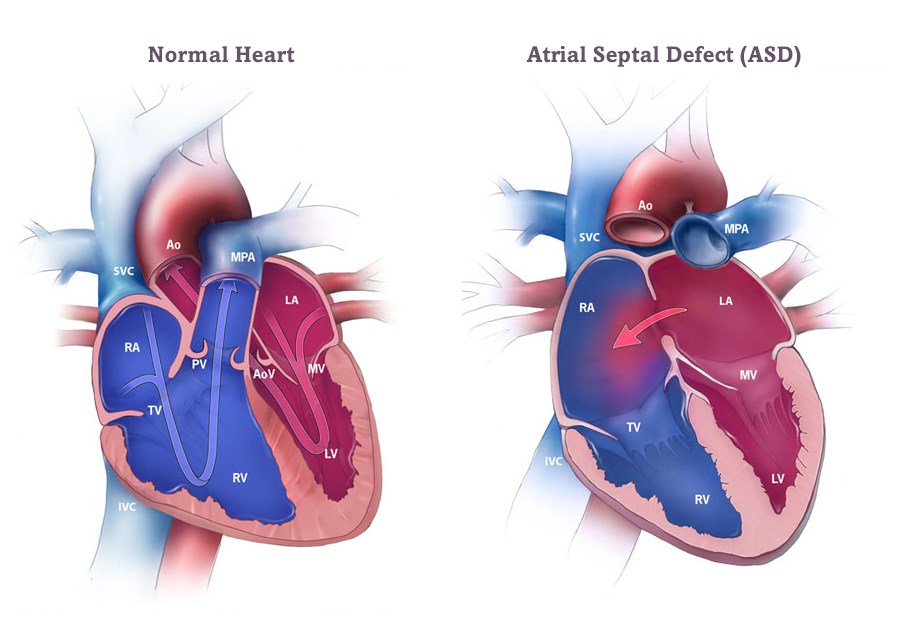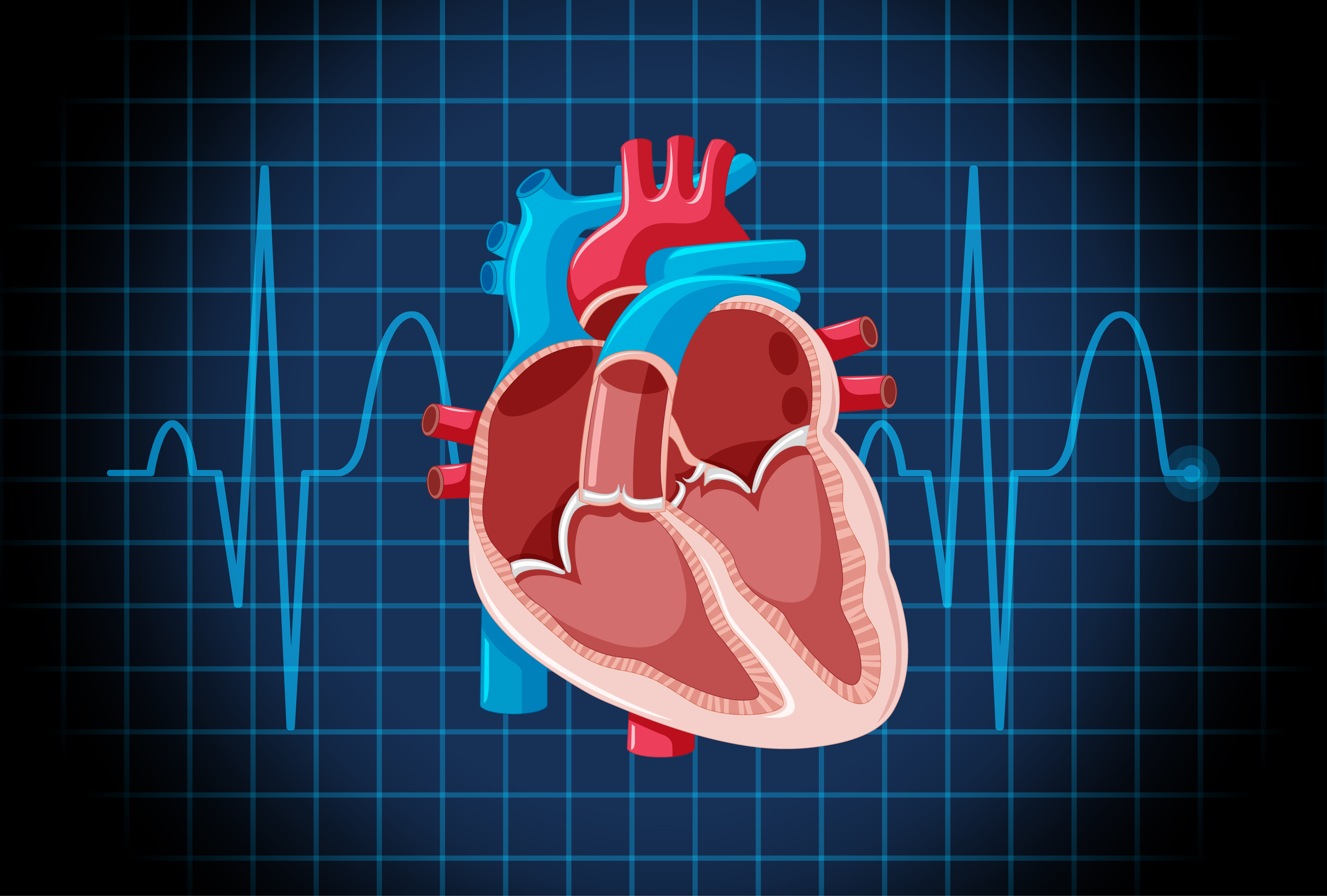Atrial septal defect (ASD) is where there is a hole in the heart. It is a relatively common type of congenital heart defect that affects the structure of the heart. This condition occurs when there is an abnormal opening or hole in the wall (septum) that separates the two upper chambers of the heart, known as the atria. Understanding ASD is crucial, as it can have significant implications for an individual’s health and well-being, but with proper diagnosis and treatment, it can be effectively managed.

What is Atrial Septal Defect (ASD)?
ASD is a type of congenital heart defect, meaning it is present from birth. The hole in the septum between the two atria allows oxygenated blood from the left atrium to flow back into the right atrium, instead of circulating properly throughout the body. This can lead to an increased workload on the right side of the heart, potentially causing it to enlarge and become less efficient over time.

Atrial Septal Defect (ASD) can often go undiagnosed, especially in cases where the defect is small and doesn’t cause significant symptoms. Estimating the exact number of people living without knowing they have an ASD is challenging due to the nature of undiagnosed cases. However, some studies and estimates can provide insight:
- Prevalence and Undiagnosed Cases:
- Congenital heart defects, including ASD, are among the most common birth defects. ASDs account for about 6-10% of congenital heart defects.
- It’s estimated that about 1 in 1,500 live births are affected by ASD.
- Many ASDs are detected in childhood, but smaller defects might not be diagnosed until adulthood or may remain undetected throughout life.
- Living with ASD:
- Undiagnosed ASD: Many individuals with small or moderate-sized ASDs may remain asymptomatic or experience only mild symptoms and, therefore, may not seek medical attention. As a result, they might live their entire lives without knowing they have an ASD.
- Diagnosed ASD: With advances in medical technology and increased awareness, many ASDs are now detected early in life. For those diagnosed, treatment options vary from regular monitoring to surgical repair, depending on the size and impact of the defect.
- Life Expectancy:
- Small ASDs: Individuals with small ASDs often have a normal life expectancy and may live without significant issues.
- Moderate to Large ASDs: If left untreated, moderate to large ASDs can lead to complications such as pulmonary hypertension, heart failure, and atrial arrhythmias. These complications can affect life expectancy and quality of life.
- Treatment Impact: With appropriate treatment, many people with ASD can lead normal, healthy lives. Surgical or catheter-based closure of the defect can significantly improve outcomes and prevent complications.
While it is difficult to provide precise numbers for undiagnosed cases, many people with small ASDs may live their entire lives without knowing they have the condition. Early diagnosis and treatment of larger ASDs are crucial for preventing complications and improving life expectancy.
Types of Atrial Septal Defects
There are several different types of ASD, classified based on the location and size of the opening in the septum:
- Ostium secundum ASD: This is the most common type, accounting for approximately 75% of all ASD cases. The hole is located in the middle of the atrial septum.
- Ostium primum ASD: This type of ASD is located near the bottom of the atrial septum, closer to the valves that separate the atria and ventricles.
- Sinus venosus ASD: This less common type of ASD is located near the entry point of the superior vena cava (the large vein that carries deoxygenated blood from the upper body to the right atrium).
- Coronary sinus ASD: This rare form of ASD involves an opening in the wall between the coronary sinus (a large vein that collects blood from the heart muscle) and the left atrium.
Symptoms and Diagnosis of ASD
Many individuals with ASD may not experience any noticeable symptoms, especially in the early stages of the condition. However, as the heart works harder to compensate for the abnormal blood flow, some common symptoms may develop, including:
- Shortness of breath, especially during physical activity
- Fatigue or decreased exercise tolerance
- Frequent respiratory infections
- Swelling in the legs or abdomen
To diagnose ASD, healthcare providers may use a variety of tests, such as echocardiography (ultrasound of the heart), electrocardiography (ECG), and cardiac catheterization.
Treatment and Management of ASD
The treatment for ASD depends on the size and location of the defect, as well as the individual’s age and overall health. In many cases, smaller ASDs may not require immediate treatment and can be monitored regularly by a healthcare provider. However, larger or symptomatic ASDs may require surgical or interventional treatment, such as:
- Transcatheter closure: This minimally invasive procedure involves using a small device to close the hole in the atrial septum, without the need for open-heart surgery.
- Open-heart surgery: In some cases, particularly for complex or large ASDs, open-heart surgery may be necessary to repair the defect.
With proper diagnosis and treatment, individuals with ASD can often lead healthy, active lives. Regular follow-up with a cardiologist is essential to monitor the condition and ensure that any necessary interventions are performed in a timely manner.
Personal Experiences
Growing up, I always experienced symptoms like breathlessness, fatigue, and dizziness, but I never thought much of it, assuming it was just genetic. My Atrial Septal Defect (ASD) was initially measured at around 3.2cm x 3.4cm. The hole was first identified by an echocardiogram, then got an MRI done on the heart for the actual measurements. However, during the operation, the surgeon found it to be closer to 4cm. I underwent open-heart surgery to close the hole, leaving a small opening to manage my severe Pulmonary Arterial Hypertension (PAH).
Conclusion
Atrial septal defect is a treatable heart condition that, with early detection and appropriate management, allows individuals to maintain a good quality of life. By understanding the different types of ASD, recognizing the potential symptoms, and seeking timely medical care, individuals can take an active role in managing their heart health and ensuring the best possible outcomes.




